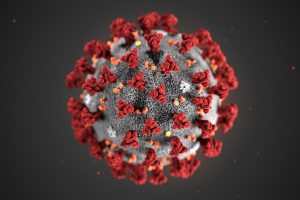Recently, the Mayo Clinic in the United States gave the following answera about COVID-19.
1.What is coronavirus?
SARS-CoV-2 is a new type of coronavirus that researchers have recently discovered that it can be transmitted through the air. It is very harmful and spreads more easily. At present, it is very difficult to diagnose because it has many common symptoms similar to influenza.

2.How does COVID-19 spread?
COVID-19 is thought to spread similarly to influenza. In other words, it can spread from person to person through droplets when an infected person coughs or sneezes. Usually within 6 feet, these droplets may be inhaled into the lungs.
3.Can I catch COVID-19 from contact with an object rather than a person?
The answer is yes. If there is a live virus on the surface of an object, we are more likely to be infected when we come into contact with it. How long SARS-CoV-2 can survive in vitro is still uncertain. Some experts estimate that SARS-CoV-2 can survive for a few hours to nine days, depending on the type of surface, ambient temperature and environmental conditions.
4.Are there any patients who are infected with COVID-19 but have no symptoms?
The answer is yes. That is, asymptomatic infected people.
5.Is there a vaccine for COVID-19?
There is no vaccine for COVID-19. The National Institutes of Health (NIH) is developing a vaccine, but it will not be approved for at least a year or more.
6.What should I do if there are symptoms of COVID-19?
If you have symptoms of COVID-19, you should immediately call your local health care provider or hospital to ask how best to assess the risk of the disease.
7.How to treat COVID-19 patients?
The basic premise for preventing the spread of the disease is to identify patients with symptoms, isolate them from other patients for appropriate assessment, and inform appropriate personnel and health authorities to take further measures. If symptoms occur, people will be asked to wear masks and answer a series of questions about their health and travel. Based on their answers and vital signs, they will be isolated from other patients while COVID-19 test results can be verified. It may take several days.
Patients who test positive for COVID-19 are isolated and treated. At present, there is no antiviral treatment for COVID-19, more severe cases or patients with immune system damage and complex diseases need to take specific intervention or treatment.
8.How to avoid COVID-19 infection?
In order to avoid COVID-19 infection, we should keep our hands clean, avoid touching eyes, nose and mouth, cover up with our hands when coughing or sneezing to prevent transmission to others, regularly clean and disinfect surfaces with high frequency of contact, avoid close contact with sick people, stay at home when sick and do not go out.
9.Should I wear a mask?
The US CDC offers some advice on whether to wear masks: CDC does not recommend that healthy people wear masks to protect themselves from respiratory diseases, including COVID-19. Masks should only be worn when recommended by a health care professional. People with symptoms of COVID-19 should use masks; this is to protect others from the risk of infection. The use of masks is also critical for health care workers and others who take care of people living with COVID-19 in a closed environment (at home or in a medical facility).
10.How do you know if there are any COVID-19 cases in your community?
Local public health authorities and the CDC will be responsible for reporting COVID-19 cases. The Mayo Clinic is also committed to protecting patient privacy and complying with all applicable laws, and the clinic does not share patient-specific information with the media without prior authorization. In addition, the Mayo Clinic will also work with public health agencies, including CDC and local public health authorities, as appropriate.
Finally, Pritish Tosh, an infectious disease specialist from the Mayo Clinic, said that if the symptoms of patients are consistent with COVID-19 and meet the CDC criteria, they will further test and evaluate them. The patient will also be isolated from other patients and treated by staff dedicated to these special needs, while patient samples will be sent to CDC for further testing.
